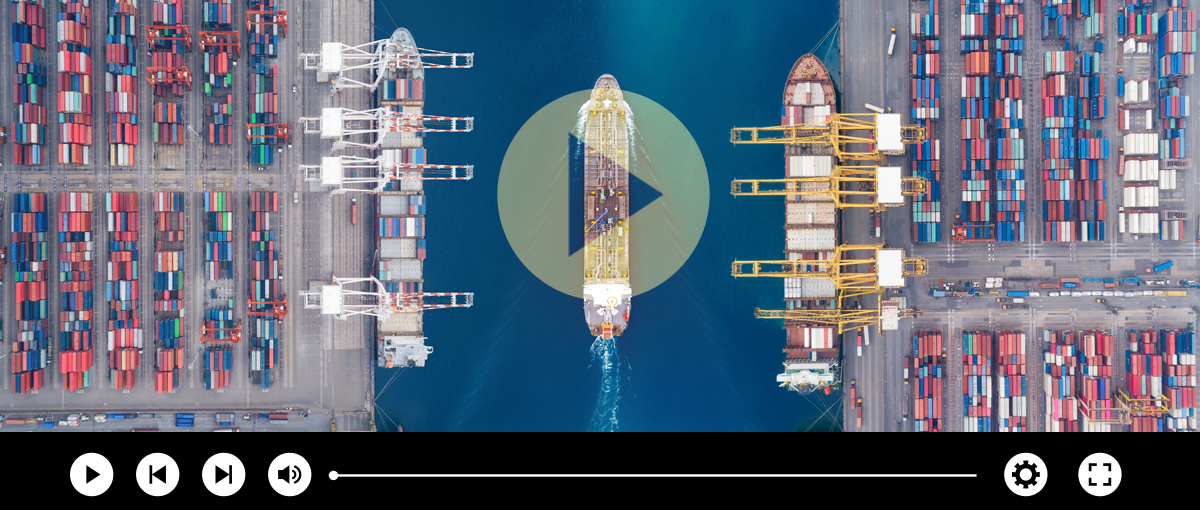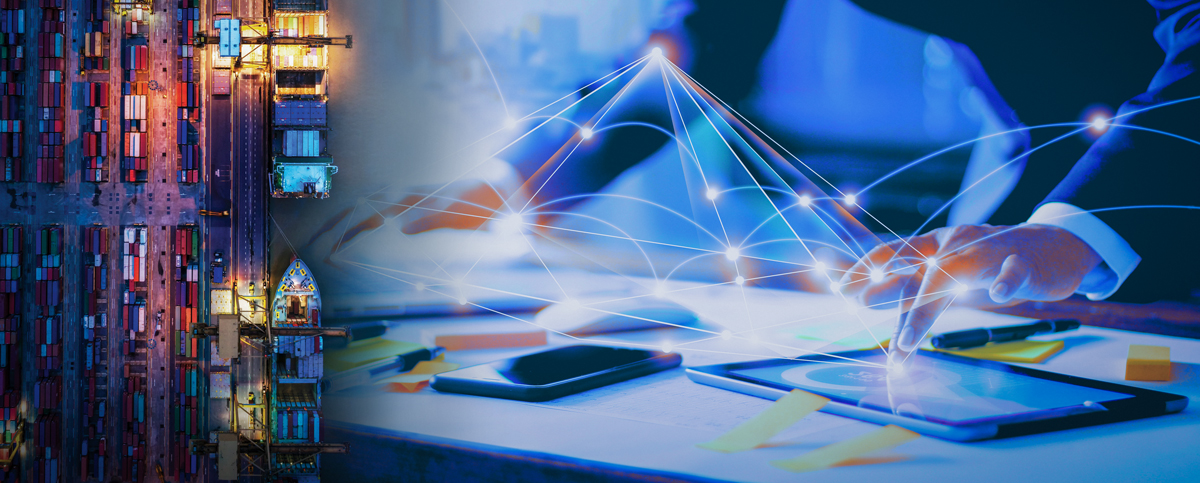Waves of Changes in the Maritime Sector
5 February 2021 — As a young engineering student, Professor Lee Loo Hay could not have expected that he would one day become the Director of the Centre for Maritime Studies (CMS) at the National University of Singapore (NUS). Describing himself as someone who has an interest in many fields, he did not initially have his sights set on a career in the maritime sector, despite his love of the ocean.

Professor Lee Loo Hay, Director of the Centre for Maritime Studies (CMS), NUS
“I learned to dive when I was a student at Harvard University and loved being in close contact with the ocean. I also love 'The Sea' song by Chang Yu-sheng and hum it often, he admitted with a laugh. “When I graduated from Harvard with a PhD in Engineering Science in 1997, my main focus was on simulation and optimisation.
These areas continued to be his area of interest, even as Singapore started to shift from manufacturing to a knowledge-based economy around the year 2000, and it became clear that there was a crucial need for the country to upgrade its air and maritime transport connectivity.
"My students and I carried out projects in optimisation, operations research and simulation to solve port-related problems. The more contributions we made, the more opportunities emerged.”
As Professor Lee found himself gradually getting more immersed in the maritime sector, it became clear that the industry was poised for change.
In 2019, some 500 staff of PSA Singapore (the flagship terminal of PSA International, a leading global port group) took part in a torch relay to mark the Singapore Bicentennial. The relay route signified the development and transformation of Singapore's maritime lifeline from white sails to container lines in a span of 200 years.
Runners set out early in the morning from Tanjong Pagar Terminal, making their way through Keppel, Brani and Pasir Panjang Terminals, and finally arriving at Tuas Port, which is expected to be completed by the 2040s. The new port represents the next chapter of the maritime sector in Singapore. With an investment of S$20 billion, Tuas Port is anticipated to be the world’s single largest fully-automated terminal. It will also be a key nucleus and multiplier for the wider Tuas Ecosystem.
“Singapore has world-leading experience in the maritime sector, and is committed to realising a smart maritime vision that is ahead of its time, of playing a central role in trade and connectivity,” observed Professor Lee.

Singapore has long been preparing to lead global maritime transformation. Back in 2013, Professor Lee received the Grand Prize for the Next Generation Container Port Challenge from Mr Lui Tuck Yew, who was then the Minister for Transport.
“At the time, the Maritime and Port Authority of Singapore (MPA) launched the challenge which invited colleges, universities and enterprises from around the world to brainstorm and propose solutions for transforming next-generation ports. The NUS team took part in the competition with a joint project with Shanghai Zhenhua Heavy Industries Company and Shanghai Maritime University. Eventually, we came up with an innovative double-storey container port concept and won the grand prize,” said Professor Lee. “It is possible to put this concept into practice. The maritime industry is undergoing a period of unprecedented transformation.”
 Sustainable integration of the next-generation advanced double-deck terminal concept SINGA Port
Sustainable integration of the next-generation advanced double-deck terminal concept SINGA Port
In 2019, the Singapore Maritime Institute (SMI) and MPA jointly released the Singapore R&D Roadmap 2030: Maritime Transformation, highlighting Singapore's commitment and strength in leading local and global maritime transformation with research and development (R&D) as the driving force. Five strategic research thrusts have been outlined under the roadmap:
- Efficient and Intelligent World Class Next Generation Port
- Strategic Sea Space and Maritime Traffic Management
- Smart Fleet Operations and Autonomous Vessels
- Effective Maritime Safety and Security
- Sustainable Maritime Environment and Energy
Digitalisation, planning and optimisation, autonomous operations, maritime safety, port security, maritime cybersecurity, maritime energy efficiency and marine environment management are the eight key industry capability areas that will empower the five identified thrusts.
The following enabling technologies have been identified for development to enable the industry capabilities: Modelling and Simulation, Immersive Experiential, Cloud Computing, Secure Transactions, Artificial Intelligence and Analytics, Smart Devices, Human Factors, Autonomous Systems, Industrial Internet of Things, Wireless Communications, Satellite Communications, Automation and Robotics, Additive Manufacturing, Clean Energy and Storage, Emissions Management, Pollution Prevention and Response, as well as Standards and Policy Research.

Similar to how it has put in great effort to nurture talent for its Industry 4.0 and Data Science development goals, Singapore has been investing human, material and financial resources towards its maritime transformation.
“The coronavirus pandemic has created great challenges for the global labour market, whilst shortages of certain skilled talent are becoming more prominent. In the case of the maritime industry, the pandemic has made it ever more urgent to reform conventional business models,” said Professor Lee.
Various maritime players have embarked on such initiatives. Some involve technological solutions, for example the development and application of a digital twin model for ports, which CMS has been working on with PSA, MPA and Jurong Port. Other efforts are focused on talent development, such as the Memorandum of Understanding (MoU) MPA signed with the Shanghai Maritime University on 11 December 2020 to support talent and academic exchanges between Singapore and China in the maritime sector.
“It is not just Singapore and China, but the global maritime community that is looking for new talent,” Professor Lee pointed out. Referencing the Master of Science in Maritime Technology and Management programme offered by CMS, he elaborated: “In the future, our students may find employment in Asia, such as Singapore, China, Japan and South Korea, or they may head to European countries such as Denmark and Norway, or choose to pursue further studies at the PhD level.”
“Digitalisation has become an inevitable trend across the maritime industry,” Professor Lee continued, signalling the need for training and educational programmes to take into account the evolving needs of the industry. “In the past, conventional maritime studies focused on how ships sail and travel, whereas our new training programme focuses on data analysis, digitalisation, and design for maritime transformation.”
There is cause to be optimistic about the future of the maritime industry. According to MPA data, it accounted for approximately 7% of Singapore's GDP in 2019 and employed about 170,000 people. Singapore's push to accelerate maritime innovations and regional maritime transformation will create new opportunities.
"What is lacking is a pool of eager, motivated and ambitious young people to join and realise their maritime dreams,” noted Professor Lee. If this next generation also shares his interest in many fields and a love of the sea, perhaps they too will make their mark on the industry as Professor Lee has.